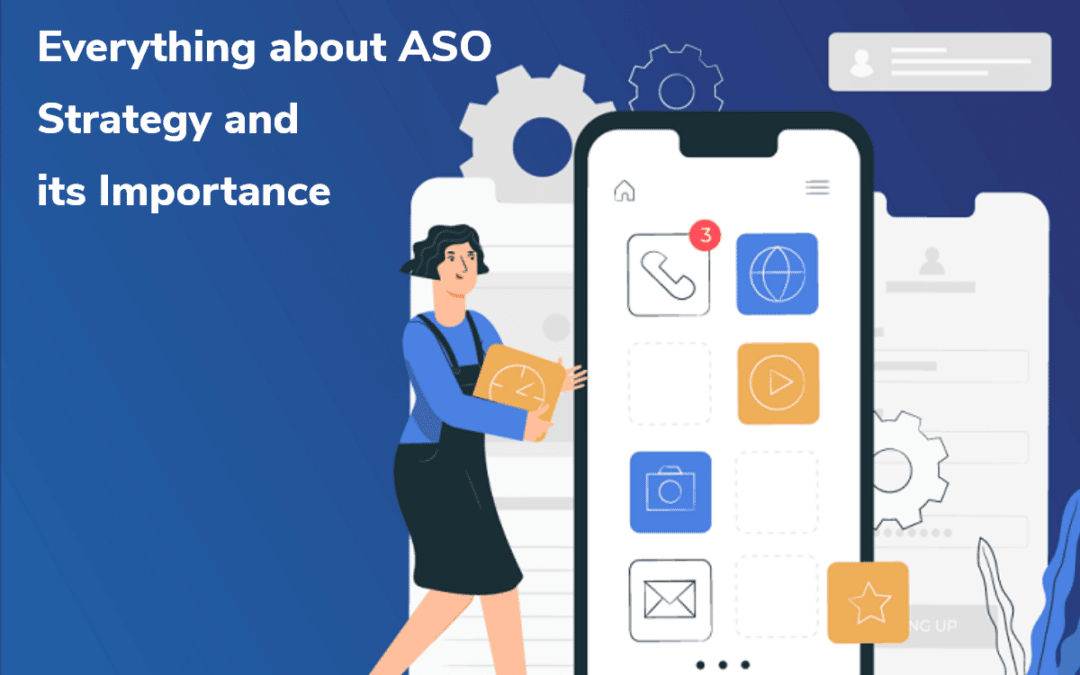Are you about to launch your app with impeccable features? Know that the next plausible step is to select the correct ASO strategy, a process to improve the app’s visibility among the app store visitors, thereby increasing the app traffic and downloads.
Key aspects of an ASO Strategy
- Optimize keywords for analyzing and selecting the relevant keywords to be included in the app’s text description.
- Apply conversion rate optimization, a process to systematically update and redesign the visual elements in the app’s product page to increase app downloads.
- Update the metadata with the most popular search keywords.
- Localize the app to reach out to a broader category of audience.
- Create and implement a review strategy to improve positive user reviews.
- Optimize the app to increase the chances of getting featured will improve the app’s user base.
Beyond backlink metrics for ASO : Ranking factors in an ASO strategy
Metadata fields
The keywords you provide in the metadata fields (app title, name, long and short description) directly influence the app’s ranking. Keywords in the app title are most significant when it comes to app store search. App Store optimization analyses and finds these popular relevant keywords for you.
App download rates
A steady number of app downloads is one of the key factors in improving the app’s ranking. ASO lets you create app store listing pages according to the user’s behavior and app performance. In addition, ASO will help you consistently update according to the app market changes to increase the app download velocity.
App conversion rate
App store algorithms can give you clear signals regarding user experience and keyword search results. ASO helps you to provide the user with the best app experience, which increases the conversion rate.
App reviews
Positive reviews and star ratings are important factors for your app store ranking. ASO shows you the ways and techniques to encourage more users to leave feedback or review. You can also better understand the user expectation and update your app accordingly.
User retention
ASO helps you study the app store algorithms with metrics to assess the app’s performance like app download rate, uninstalls, app time, etc. Then, you can add new features and update engaging content to improve the user retention rate.
App’s UI
The right ASO strategy ensures your app is built well without errors or bugs and provides easy navigation. This makes a good user experience possible, improving the app’s ranking.
How is ASO different from SEO?
ASO is considered the SEO of apps. But they function in two different portals and work differently. The difference between an ASO and SEO are as follows:
- Search queries – the search query length is comparatively shorter or more exact when users search for a particular app or functionality. Search queries on the web are longer because people usually search for answers or opinions from the search engine.
- Keywords – In an app, keyword density is limited to the App name, title, and description. So the marketers have to select and place the relevant keywords in the right places. Whereas on the web, keywords can be optimized on multiple web pages.
- User retention – In both SEO and ASO, the aim is to give the best experience to the user. Apps depend on the app store algorithm to understand their performance, and search engines opt for web pages with a good speed.
ASO in Google Play and Apple app store
Although ASO is almost the same in both Google Play and Apple, they differ in some elements like:
- The display of app search results differs in the Google play store and Apple app store.
- There is no option to add a banner in the Google Play store.
- App title is crucial in Google Play because the screenshots and short descriptions cannot show the generic keywords.
- Subtitles appear differently in both the app store stores.
- Apple has a keyword field that allows up to 100 keywords, while in Google play, you have to include keywords in the App title, long and short description.
- Google algorithm applies ASO practices by default, which includes backlinks, but Apple does not.
- Screenshot guidelines are different for Google Play and Apple App Store.
The importance of a correct ASO Strategy
- A significant percentage of the app downloads happens from app stores. So, it is key to target and impresses the app store audience with an ASO.
- The right app store optimization strategy will be able to make your app stand out from others and convince the app visitor to download the app.
- ASO is the most cost-effective strategy to target and engage loyal users.
- ASO makes it easier for you to follow and adapt the app store’s best practices. So, the chances of getting featured also become higher.
- The winning secret of the top-rated apps is that they build an ASO strategy to stay ahead of market challenges.
App Store Optimization ensures your app is rated and ranked well. The ASO strategy focuses on optimizing the look and the feel of the app elements and the metadata fields. It is a continual process that ensures the relevant keywords are rightly placed to drive in more downloads and this, in turn, helps the apps’ visibility to increase multifold.

